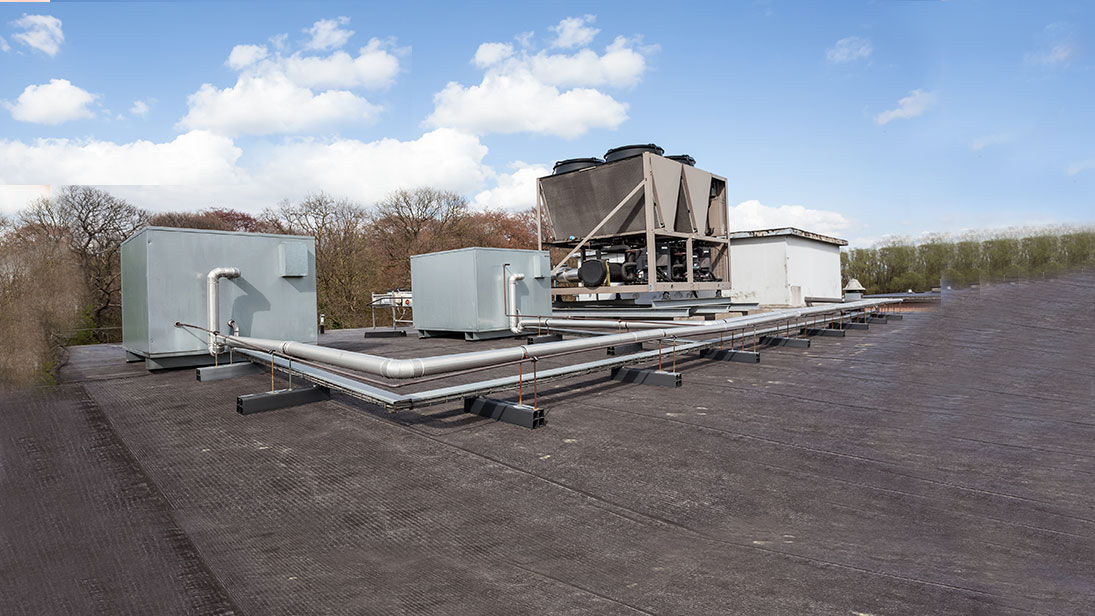What’s the difference between a good rooftop design and a bad rooftop design?
Functionally speaking, a “bad” rooftop design will express itself through the results. You’ll find that a bad rooftop design requires extensive maintenance more often. A bad rooftop design will have poor fit and finish—there will be gaps between flashings and penetrations, and the edges may be composed entirely of roofing tar. You’ll begin to find leaks within months of the roof’s completion.
A bad roofing design will have poor conformity to building regulations. It may not be able to resist uplift forces. It will leak energy due to poor insulation, and you will be forced to spend more money to heat and cool the building. Between constant repairs and increased energy costs, you’ll spend more money maintaining the roof than you did on its initial construction.
Here’s the thing—there are all outcomes of poorly-optimized rooftop design. How do you catch these design flaws before they’re embodied in plywood and membrane—and before they start costing you money?
Interpreting Design Intent
No one sets out to design a bad roof (assuming you’ve hired a reputable architect). Problems occur when an architect assembles a set of plans that are confusing for contractors to follow. If an architect doesn’t use a 3D model or fails to specify materials, then contractors will be forced to use their own interpretation. This may result in a contractor taking shortcuts or using a liberal interpretation of the blueprints—resulting in a poorly-optimized roof.
Hiring a roofing consultant as an intermediary between your roofing contractor and your architect is a great way to ensure that your roof gets completed to your requirements. The roofing consultant is familiar with local codes, knows the best materials for the job, and can compensate for variations—such as temperature and time of year—that might necessitate a change in your roofing design.
Adding Safety Features
Even a “good” design will need regular roofing inspections once completed. Industry standards suggest that you should conduct a commercial roofing inspection at least twice a year without fail—once in the spring and once in the fall, before more extreme weather has the chance to do its work. In addition, you should inspect for damage after any extreme weather event—wind, hail, snow, etc.
Adding safety features to your roof allows for two positive outcomes. First, if you have safety features on your roof and your workers are trained in their use, you’ll be able to protect them from accidents, and you’ll be less likely to be found liable if an accident occurs. Second, your roof will be protected from your workers—workers will be less likely to damage membranes and insulation if they have a place to walk on other than the roof surface itself.
Installing walkways and access platforms on your roof will allow your workers to traverse the surface of your roof during a roofing inspection without damaging the surface of the roof itself. In addition, these features will help satisfy new OSHA safety regulations that mandate guardrails for workers working within six feet of a roof edge.
Increasing Functionality
Lastly, it’s likely that you will be putting a certain amount of equipment on top of your roof. Pipes, cables, HVAC equipment, solar panels, and other capital equipment are all commonly found on commercial roofs. This equipment needs regular inspection and maintenance—and it’s also necessary for this equipment to be kept off the rooftop during its normal operation.
For example, placing electrical cables in an elevated cable tray makes sense for more than one reason. First, keeping all of your cables in the same rough location makes sense from an organizational standpoint. They’re easier to inspect if they’re all in the same spot.
Second, there’s a safety consideration. If a cable develops a fault, you don’t want to have it directly in contact with the roof surface—otherwise, you’ll run the risk of an electrical fire. You want pipe supports for the same reason. You don’t want leaking water, wastewater, or chemicals in direct contact with your roofing membrane.
Solidify Your Roof Design with PHP Systems/Design
At PHP Systems/Design, we work with you to make sure that your roofing designs are safe, well optimized, and up to code. Since no roofing design is complete without safety features, we’ll work with you to create an integrated system of walkways and supports that will let you work on your roof safely, without adding excess weight. In addition, we offer rooftop evaluation services that help you confirm that your roof is and will remain safe. Contact us today for more information!




